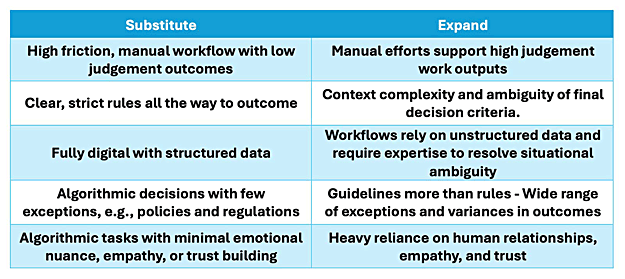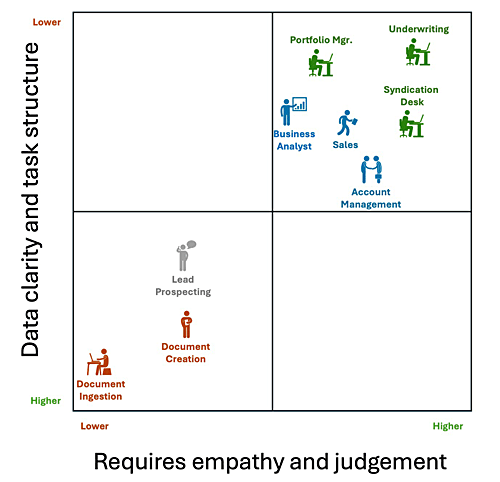
The great thing about paradoxes is that they are counter intuitive. They start with the expected: technological efficiency improves the productivity of a resource thereby reducing the need for that resource, for example. But then there are unexpected outcomes that are persistent and consistent.
Such was the case William Stanley Jevons described. The resource was coal, and the technology was James Watt’s steam engine. Londoners initially celebrated Watt’s more efficient design, confident it would bring cleaner air by reducing coal consumption. Yet their optimism quickly turned to disappointment. The improved efficiency made steam engines far more practical and profitable, sparking their rapid proliferation. Instead of burning less coal, Londoners saw coal use surge—dramatically. They had stumbled into what became known as Jevons’ Paradox: technological efficiency can drive an unexpected increase in resource demand.
Jevons’ Paradox has proven true for over 16 decades across a plethora of technological innovation. Recent examples include fuel-efficient automobiles not reducing the demand for gasoline and, one of my favorites, LED lighting not reducing the demand for electricity as LED lighting spread to everything including kids’ shoes and dog collars.
But Jevons’ Paradox is not limited to physical resources like coal, gasoline, and electricity, it also has historical examples in human resources, aka jobs. Spreadsheet`s (Excel) did not reduce the number of accountants, ATMs did not eliminate the need for bank tellers, and higher-level coding techniques have not reduced the number of software engineers needed to help software take over the world. Which brings us to the impending impact of AI agents on jobs of all types.
AI is inherently an efficiency and productivity technology because it reduces the constraints of human cognitive resources limited by the availability of trained labor. As with every technological efficiency, speculation on its impact on society, in this case dire speculation abounds. This summer the Wall Street Journal has published a wave of front-page articles describing how AI is an existential threat to many occupations, particularly white-collar professions.
These “sky is falling” expectations have triggered thought leaders, technology prognosticators, and even casual followers of Jevons’ Paradox to speculate on whether “it will be different this time.” How can software that is so smart not eliminate jobs? McKinsey is grappling with the paradox by simultaneously reducing headcount and hiring AI experts. So, the million-dollar question is “Will Jevons’ Paradox hold and protect equipment finance jobs by growing the industry via the efficiencies of AI faster than the cost cutters can reduce headcounts?
Jevons, AI, and equipment finance – “It depends.”
The sky may not be falling, but expectations of Jevons providing blanket protection to equipment finance offerings and professions from the efficiencies AI is not a one-size-fits-all. It depends. When integrating Jevons’ Paradox into the strategic planning response to an efficiency disruption like AI, two important circumstances must be considered.
The first is regulations. Equipment finance is a highly regulated industry, and regulations have historically capped the efficiency-based demand surges of technological efficiency. When hybrid corn seeds improved the efficiency of water use in corn yields by 20% in the 1970’s, demand for water and farmland prices remained stable in the Great Plains states of the US due to strict government regulations on water use. Regulation can suppress an unexpected upside of Jevon’s Paradox.
An expected demand surge in equipment finance is small-to-mid-ticket leasing. AI is already reducing origination and underwriting costs via greater efficiency with AI-based document ingestion and spreading automation, improved payment default and asset residual forecasting, and automated decisions in workflows. As a result, the convenience, price, and profitability of small ticket deals are improving thereby increasing the overall attractiveness for borrowers and lenders alike. A Jevons efficiency-demand-surge is almost certain. But EF strategists must consider regulations like SBA 504 wherein strict requirements for longer term loans, reduced borrower income eligibility, and exemptions on working capital will limit the ability for farmers and small business borrowers to quickly adapt and expand their operations using SBA funds. AI will increase the demand for small and mid-ticket leasing generally, but the surge may pass over segments with tight government controls. Regulations are an important consideration when considering a strategic response to the promises of Jevons’ Paradox.
The second circumstance that must be considered is the impact of the technology on the staffing needed to grow with the demand surge. Any technological efficiency, particularly a decision enabling technology like AI, will impact different roles in the workflow differently. Those who misjudge the impact on the different roles and areas of expertise in the enterprise can end up inappropriately staffed to compete for the upside created by the efficiency.
Traditional economics says that the AI-based efficiencies in document handling, sales, and credit analysis cited above will reduce the need for these resources in the business. But Jevons’ Paradox steps in and says, “Not so fast, the demand surge is going to expand the need for some roles.” History teaches that job demand behaves differently within the paradox depending upon its relationship with technological efficiency. A demand surge creates an increased need for a given function of the workflow, but if the technology provides a complete solution for the desired outcome, it can be a substitute for the role. The demand for accountants followed the growth in financial modeling generated by the efficiencies of spreadsheets because the spreadsheets could not design models, but telephone operators were replaced by automated switching in telephone networks – the tasks were predetermined and unambiguous.
Characteristics of the work performed by each role will determine how demand for that role will change due to AI agent efficiency and augmentation. Digital workflows actually make it easier to judge the characteristics of roles via the structure and ambiguity of both the data used and the tasks performed by the role. Highly structured data supporting highly structured task sequences usually provide unambiguous outcomes that are well suited for AI agents. Both document ingestion and creation tend to operate on highly structured data following strict processing rules, particularly in small to mid-ticket workflows. AI Agents will do well as a substitute for these roles. Underwriting and syndication roles, however, deal with much more ambiguous data sets and require human judgement for more complex decisions particularly those outside of simple auto-approval lanes.
Table 1 Characteristics of roles for which AI Agents will Substitute or Expand the roles.

As the number of small and mid-ticket lease requests grows, some parts of the business will be automated with AI prediction, but much of the distribution will have complexity and ambiguity that will require expertise, empathy, and judgement. The Empathy/Judgement vs. Data Clarity/Task Structure quad chart provides a quick look at how different functions within the lease origination and servicing workflows will fall into the Substitute or Expand outcomes of Jevons’ Paradox. Some roles will expand dramatically, and some will be replaced by the software – it depends. Business leaders must make sure they have both the resources and expertise that they need. Mentoring, flexibility, and a learning culture are all going to be critical to managing the varied effects of AI on an equipment finance workforce.

The demand for different roles in the EF workflow will expand or contract with the inclusion of AI Agents based on the degree to which data is structured and clear as well as the need for empathy and judgement in performing the tasks.
Some are calling AI the most disruptive technology ever because of how close it comes to “being human.” This fact is bringing AI to the forefront of career discussions more than any previous technological trend. Proximity to human capabilities makes for good click bait for technology fearmongers and as a result makes Jevons’ Paradox for AI efficiency even more important for leaders planning their way forward. AI will not replace bull dozers, corn combines, or long-haul trucks so the business of equipment finance is not at risk. Indeed, AI efficiency will make some parts of the market much more attractive to borrowers, creating new opportunities. But the paradox will impact careers differently, some positively and some negatively, so strategists must work with their technology partners and plan accordingly. Those who engage the paradox and build their teams appropriately will reap the benefits of the paradox upside.
While we do not offer investment advice at Tamarack, we do not believe the sky is falling, and we are not shorting equipment finance jobs.